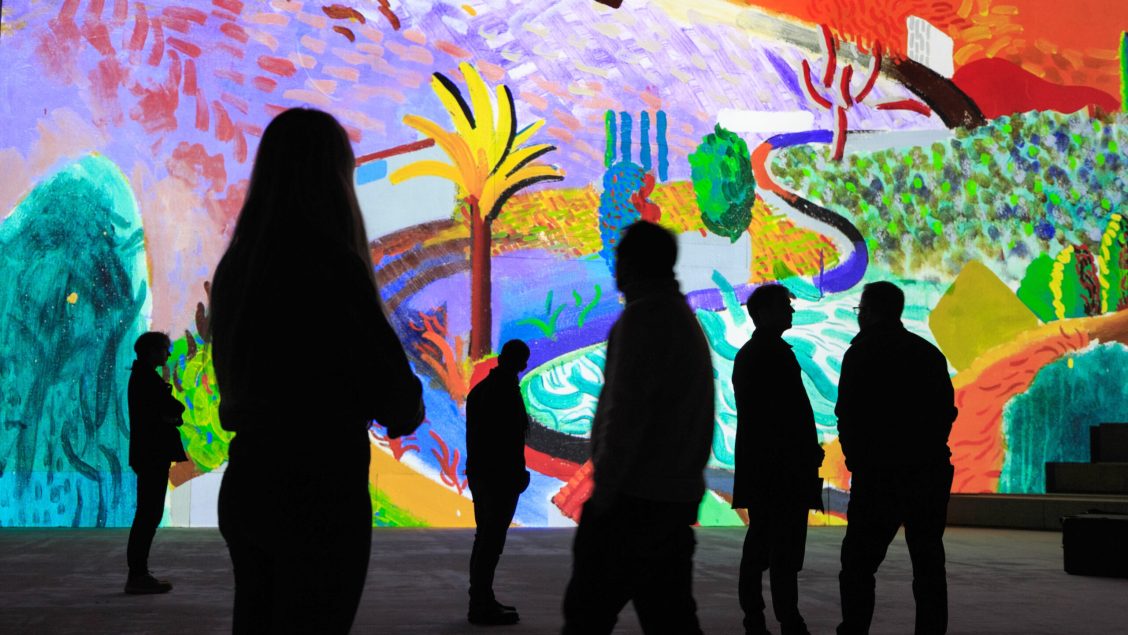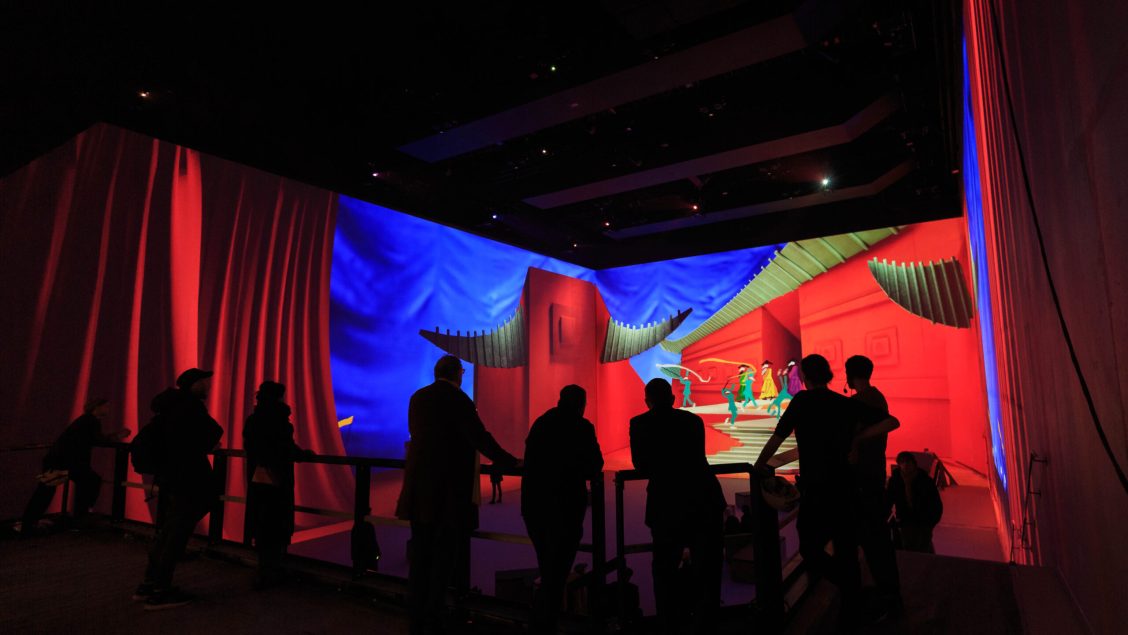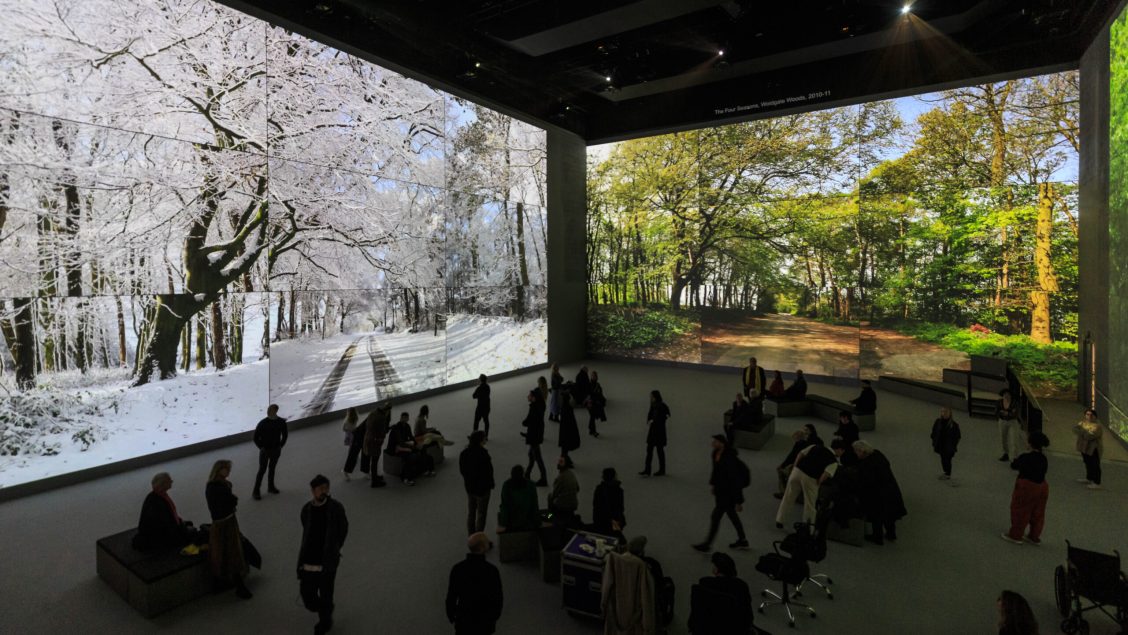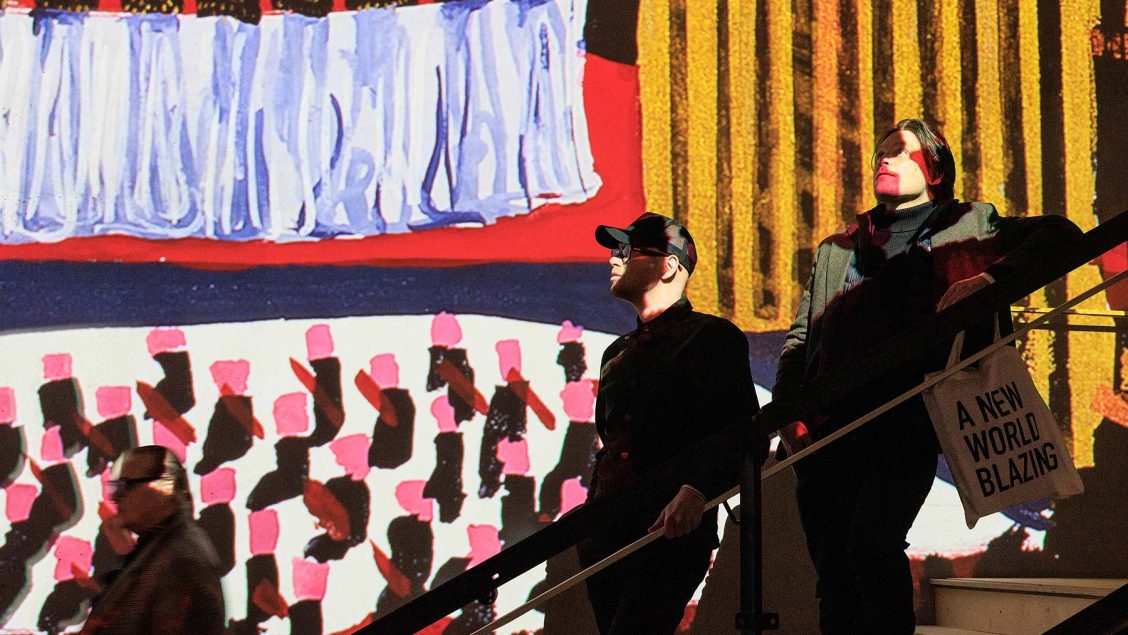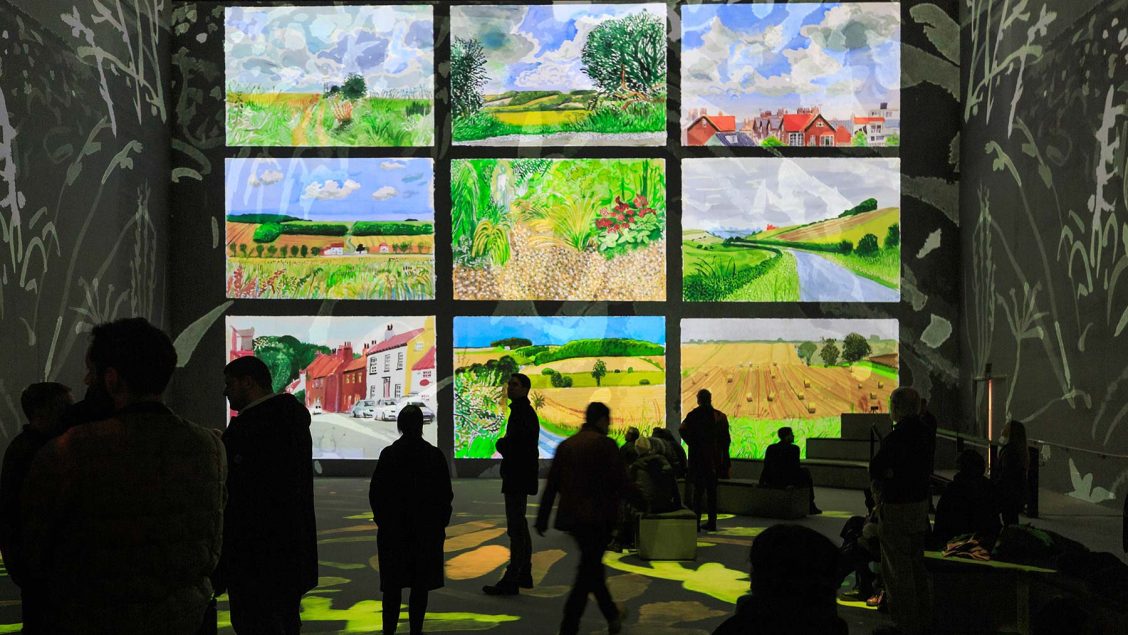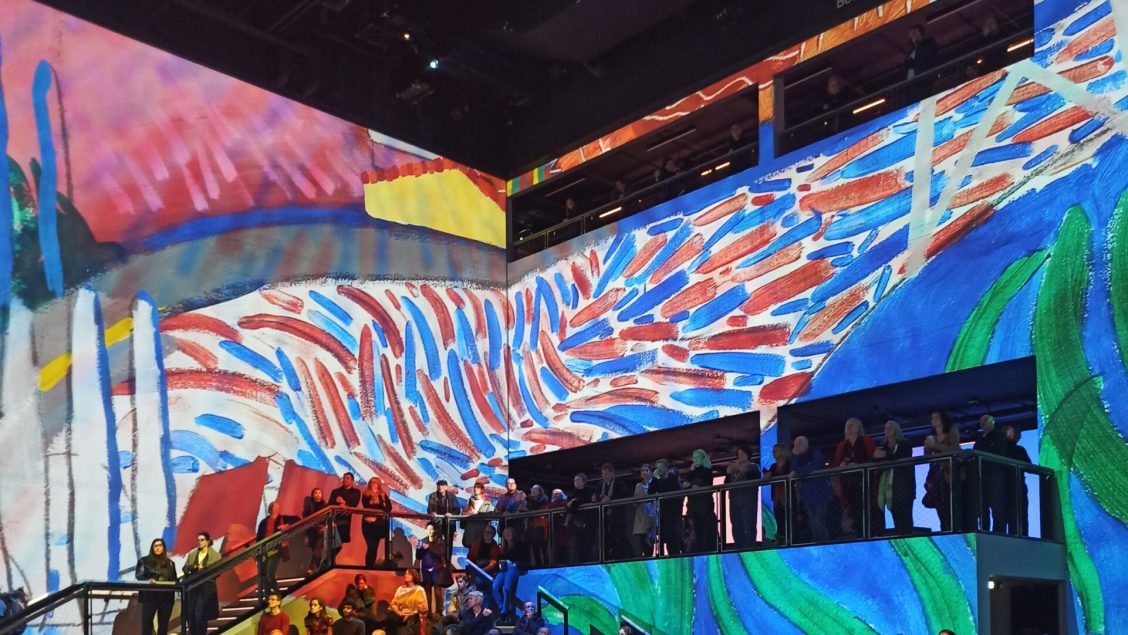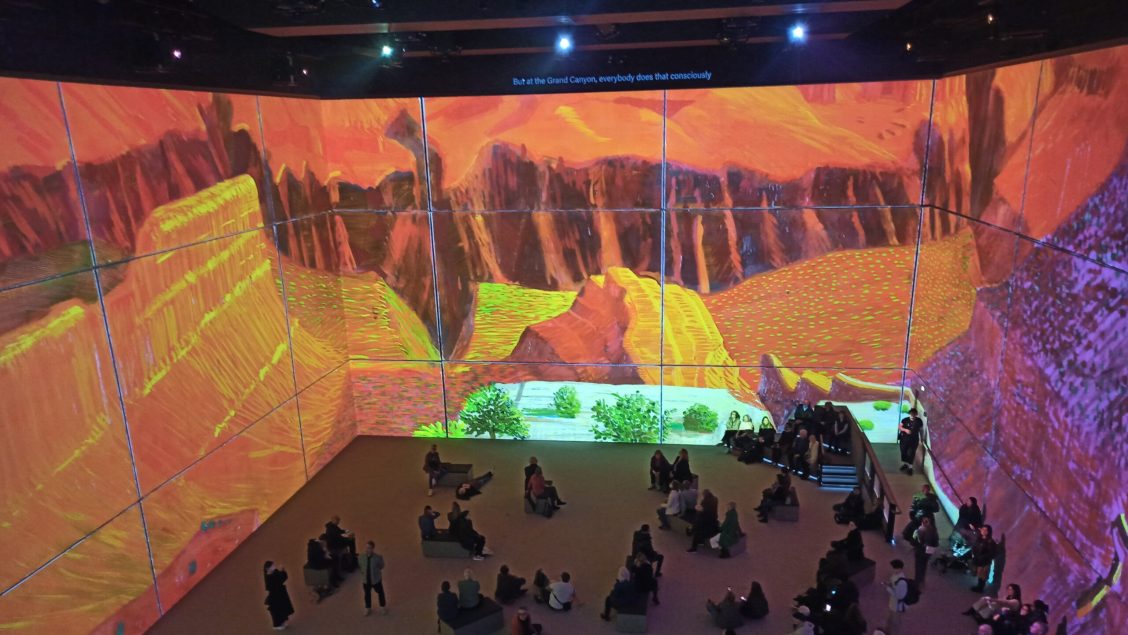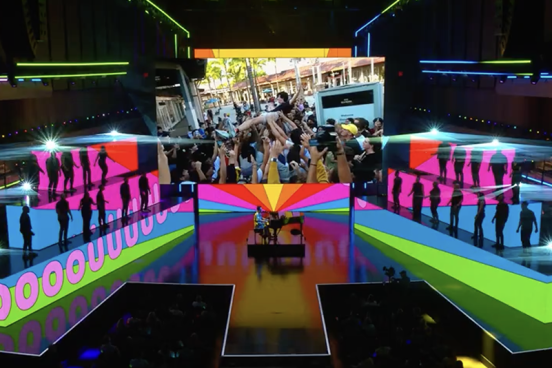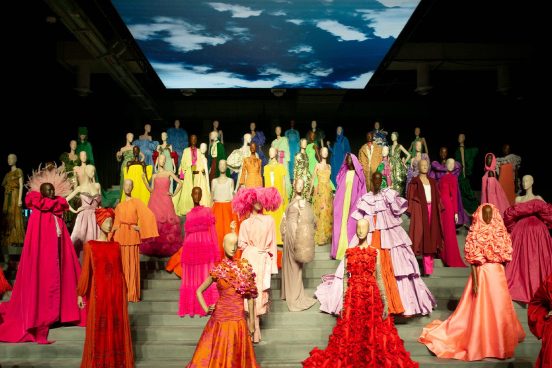- 1st permanent UK installation of HOLOPLOT
- 24X2 embedded HOLOPLOT X1 Arrays
Lightroom - ‘DAVID HOCKNEY: BIGGER AND CLOSER not smaller and further away’
THE PROJECT
The Hockney experience is as astonishing visually as it is alive with sound. The show features a specially created score written by American contemporary composer Nico Muhly and sound design by Olivier and Tony award-winning sound designer Gareth Fry.
Four and a half years in the making, Lightroom was conceived by award-winning design studio and production company, 59 Productions, and is a joint venture between them and London Theatre Company, the creative engine behind the Bridge Theatre.
The ‘Bigger and Closer’ exhibition allows the audience to enter Hockney’s thought process and creative motivation, generating new perspectives on some of his most well-known, as well as more recent works.
Creative Technology worked closely with HOLOPLOT on the project to define the audio experience and identify the best technical solutions to deliver the desired immersive audio experience.
THE CHALLENGES
Looking for a suitable audio solution that could turn Lightroom’s ambitious concrete structure into a smooth sounding gallery space without compromising the 360-degree visuals, the team quickly realised that conventional loudspeaker solutions would need multiple wall cavities or mounting positions on all four walls to achieve the desired immersive effects.
Using HOLOPLOT and a system design that only required two positions within the room, yet delivered more creative tools that could be used to generate immersive effects. The system not only provided the answer for the current exhibit but also paved the way for future shows.
Thanks to HOLOPLOT’s unique optimisation algorithms, the listening area can be defined as well as the relative sound pressure level for each area. This allows for uniform coverage from each array no matter where the listener is positioned within the space. Additionally, each array is strategically placed behind colour-matched, acoustically transparent material, which preserves the integrity of the 360-degree projection surface.
The biggest challenge for the installation was getting the speakers into position. But with specially designed dollies to help manoeuvre the cabinets, an experienced team and good planning, everything went smoothly. And now the system is in place, any adjustments needed for future projects can be done via HOLOPLOT’s software, dispensing with the need for mechanical steering or for additional cabinets to be added, which is a huge advantage.
THE DETAILS
Lightroom was originally destined to be London Theatre Company’s second theatre, but the pandemic elicited a change of direction for both the venue and 59 Production’s plans for an exhibition space.
The final system design consists of two HOLOPLOT X1 arrays at either end of the room. Each array comprises four X1 Modul 96s and four X1 Modul 80-S, embedded and entirely hidden within predefined wall cavities, each at a different height. The acoustic centre of the East Array is at 4.61m and for the West Array at 6.66m. A traditional audio solution, with sources facing each other, would have created phase issues and spill between the sources.
The immersive effects that are used in Gareth Fry’s sound design were created with X1’s Wave Field Synthesis (WFS) capabilities to create Virtual Sources. These Virtual Sources are positioned at a set distance from the North and South walls where it was not possible to integrate arrays or point sources.
The positions of the Virtual Sources are defined inside HOLOPLOT Plan, the recently launched sound system design software allowing sound designers to visualize the impact of X1’s unique capabilities on any given space. The ‘bundled’ waves are reflected from the wall as if there is a point source positioned there, allowing the listener to localise the sound from a position where there is no array. It was key at the Lightroom experience that visitors would be able to localise sound from these reflections no matter where they are within the main space. To achieve this, multiple reflections were distributed along the North and South walls of the venue.
Get in touch with one of our experts who will be happy to talk through your technology requirements with you.

